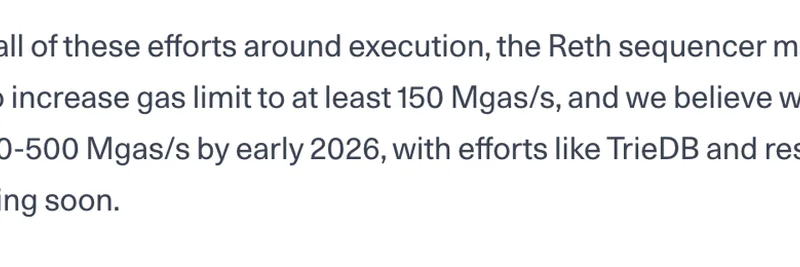Breaking Down Ryan Adams' Tweet on Base's Scaling Leap
If you're deep into the crypto world, especially meme tokens, you've probably heard the buzz around Base, Coinbase's Layer 2 network on Ethereum. Recently, Ryan Sean Adams, a prominent crypto investor and co-founder of Bankless, dropped a tweet that's got everyone talking. He points out how Ethereum's upcoming December upgrade, dubbed Fusaka, could supercharge Base to handle 400-500 million gas units per second (Mgas/s) by early 2026. For context, gas is basically the fuel for transactions on Ethereum networks—higher gas limits mean more transactions can happen without clogging the system.
Adams emphasizes that this isn't just hype; it's backed by solid engineering. He links to a detailed Base scaling blog post, where the team outlines their progress. One key highlight from the post, as shared in Adams' tweet, is the migration to the Reth sequencer. Reth is a high-performance Ethereum client written in Rust, known for its speed and efficiency. This switch has already made it safe to bump the gas limit to at least 150 Mgas/s, with more optimizations on the horizon.
What This Means for Transactions Per Second (TPS)
Adams gets straight to the exciting part: Base could hit 10,000 to 20,000 TPS in just a few months. TPS measures how many transactions a network can process per second—think Visa-level speeds but decentralized. Right now, Base hovers around lower figures, but this scaling could make it a powerhouse for high-volume activities like trading meme tokens. Meme coins thrive on rapid, low-cost trades, and Base has already become a hotspot for them, rivaling Solana's ecosystem.
The blog post, as teased in the tweet, dives into bottlenecks and solutions. For instance, it reviews four main scaling hurdles: L1 data availability (how much data can be posted to Ethereum), client execution speed, fault proof performance (ensuring secure verifications), and state/history growth (managing node storage).
Behind the Scenes: Key Efforts Driving the Scale
The Reth sequencer migration is a game-changer, but it's not alone. Upcoming initiatives like TrieDB—an optimized database for Ethereum's state trie, which stores account data—and resource metering will push those gas limits even higher. Resource metering helps allocate computing resources more efficiently, preventing bottlenecks during peak times.
Adams makes a great point: Scaling Ethereum isn't just the Ethereum Foundation's job. Dozens of well-funded teams, including Base's engineers, are contributing open-source code that benefits the entire ecosystem. This collaborative push is why Ethereum remains a leader in blockchain innovation.
Implications for Meme Token Enthusiasts
For meme token traders and creators, this is huge. Higher TPS means faster trades, lower fees, and less frustration during viral pumps. Base has already hosted hits like various dog-themed coins and celebrity tokens. With these upgrades, it could attract even more liquidity and innovation, making it easier for blockchain practitioners to launch and trade memes without the headaches of congested networks.
If you're building or investing in memes, keep an eye on Base's progress. Follow Ryan Adams on X for more insights, and dive into the full blog post to geek out on the tech details.
Looking Ahead: Ethereum's Broader Ecosystem
This tweet underscores a shift in perception—Ethereum scaling is a multi-team effort, not a solo act. By early 2026, with Fusaka live, we could see a more robust, scalable Ethereum that powers everything from DeFi to NFTs and, of course, memes. Stay tuned as these developments unfold; they're set to redefine what's possible in crypto.



